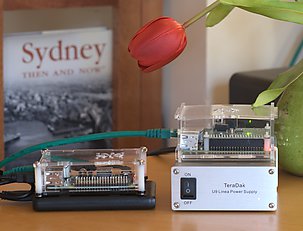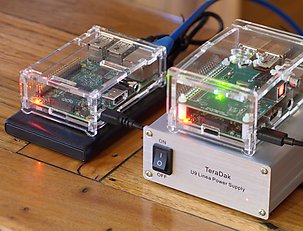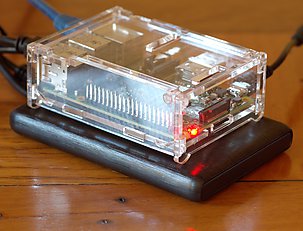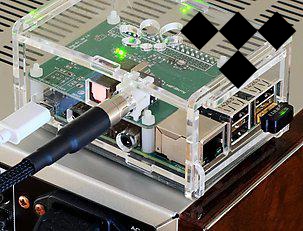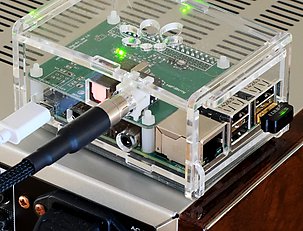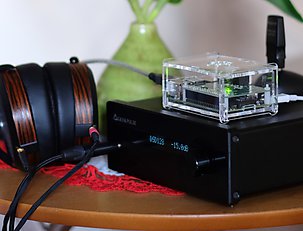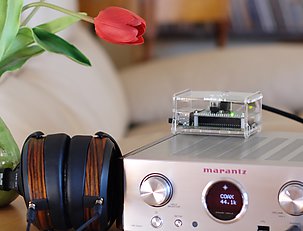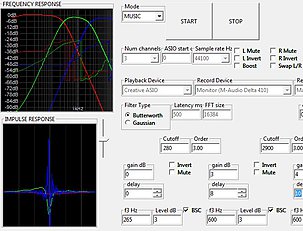Technical and DIY
Articles that explain or educate readers on one or more technical aspects of the hobby. Technical articles from industry members are welcomed, as are those by any audiophile who has completed an audio project build.
Editor: John Reekie.
More command-line fu, this time mostly on your Mac instead of the Raspberry Pi. The purpose? To create a robust solution for synchronizing your music library (or libraries) on your Mac over to the PiDIsk. John Reekie walks you through it step by step and concludes the series: “All in all, I’m very pleased with this playback ‘ecosystem’… you don’t have to spend much to get started.”
Continue Reading...
Files are one thing, but music is another. To make the PiDisk music-aware, John Reekie adds two services to it. MinimServer gives UPnP clients a “music aware” view of the files, while BubbleUPnP turns the player into an “OpenHome renderer.” Meaning? TIDAL too.
Continue Reading...
John Reekie continues his journey into the Land of Pi by setting up a second Pi dedicated as a music server. Pi, case, power supply and a portable hard drive. He goes “command line” on this one, but provides step by step instructions all the way. This article, the first in a series of three, provides the foundation by setting up the Pi as a file share.
Continue Reading...
In the fourth part of his three-part series on how to put together and set up an inexpensive music streamer using a Raspberry Pi and a HifiBerry digital output card, John Reekie explains how to stream TIDAL directly to the Raspberry Pi. He also picks his favorite controllers on three different platforms. He concludes by promising to add a second Raspberry Pi to act as a music server.
Continue Reading...
John Reekie wraps up his three-part series on an inexpensive music streamer built from a Raspberry Pi and a HifiBerry DIGI+ interface card. This instalment covers a range of topics that didn’t fit in the first two instalments: more controller apps, Wi-Fi, Airplay, use with an Android tablet, and various questions and thoughts about power supplies and DACs. As a bonus, he briefly covers how to use the PiStreamer with JRiver Media Center.
Continue Reading...
“Networked music playback can be a bit… confusing,” writes John Reekie as he begins the second article in his series on the “PiStreamer.” He decides to use a simple (ish) architecture with a music server running on a Mac and a controller app running on an iPad, and shows how to set up the various components.
Continue Reading...
“In this article, I’m going to take a bit of a right turn…” writes John Reekie, as he prepares to sort out a streaming music solution based on a $35 credit-card sized computer. Add a digital interface board, a case, a power supply, a Wifi card… OK for a bit over a hundred dollars, “there’s no reason every Mac user shouldn’t just get one to play with.”
Continue Reading...
“All the world’s a stage,” wrote Shakespeare in the introduction to the monologue on the seven ages of man. Dan Gravell writes about the lifecycle of a computer music library based on his twenty years of experience in managing music libraries. Over the course of the “four ages” of a music library, he covers file formats, tagging, and security.
Continue Reading...
Richard Thompson proposes that we take a rational approach to high-fidelity sound reproduction: “My argument is that we should simply ditch every arbitrary distortion of the signal if we can” and not continue to “dress up traditional compromises with exotic materials and pointless over-engineering.” He tests the concept with an active system based on low-cost components and linear-phase crossovers implemented in PC software.
Continue Reading...
In the second installment of the series on the Mini Convertible active loudspeaker project, John Reekie walks through the crossover design. Each step is explained and detailed measurements taken to illustrate the process.
Continue Reading...
